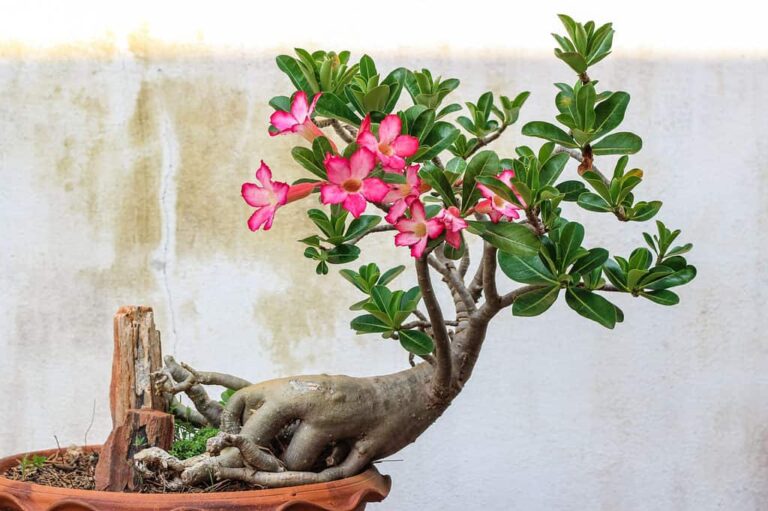In the realm of exotic flora, few plants captivate the imagination quite like the Desert Rose (Adenium obesum). Known for its enchanting beauty and remarkable resilience, this botanical gem has established itself as a cherished addition to gardens and homes worldwide. This succulent shrub traces its origins to the arid regions of Africa and the Arabian Peninsula.
Its distinct appearance, with its succulent leaves and vibrant blossoms in shades ranging from fiery reds to delicate pinks and whites, truly resembles a blooming rose in the desert. While its beguiling allure may suggest a demanding caretaking regime, the Desert Rose surprises with its adaptability and ability to thrive in diverse climates, making it a delightful companion for both seasoned gardeners and budding enthusiasts.
Care
If you give enough sunlight and regular watering, your Desert Rose will be pretty happy. Here are some aspects you should keep in mind:
- Soil: The desert rose plant, true to its name, thrives in dry desert conditions, necessitating well-draining sandy or gravelly cactus soil with a neutral to acidic pH of approximately 6.0.
- Water: During late Spring and Summer, you should keep the soil moist (but not soaked), while in the fall and winter, always wait until it dries up, before giving it water.
- Light: For optimal growth, the desert rose requires abundant sunlight, so select a location in your home such as a sunny southern-facing windowsill or sunroom that offers ample light throughout the day.
- Temperature: This plant loves temps between 65 and 90 degrees (F). Also, make sure you never leave it in places where the temps dip under 30(F).
Propagation
There are two main ways of propagating Desert roses: you can go using seeds, or if you have a plant already, you can use cuttings. Whichever method you choose, patience and proper care are key to successfully propagating these exquisite plants.
Pruning
Pruning your desert rose is best done in early spring, just before new growth emerges. It’s a great way to keep your plant healthy and in shape.
- Start by gently removing any dead, damaged, or branches that are crossing each other. Feel free to shape the plant to your liking as well. If you want to control its size, pruning can help with that too.
- Remember not to trim away more than a third of the foliage at once. Don’t forget to get rid of any yellow or wilted leaves and clear away any plant debris.
- To minimize the risk of infections, use clean scissors or shears.
- Also, avoid cutting through yellowed tissue to prevent diseases from taking hold.
Common Pests
Frequently Asked Questions
Desert Roses only survive the winter if you take them inside during the cold season.
Where is the best place to plant a desert rose?
Desert roses love full sun and well-drained, sandy soil. When choosing a location, make sure it gets enough light but does not get scorched by it.
Can you touch a desert rose?
Desert roses contain poisonous sap, so you should keep your pets and children from touching it.
Do desert rose need big pots?
Not particularly. An 8-10 inch pot with a max depth of 4-5 inches is perfectly fine for this plant.
How fast do desert rose plants grow?
Desert roses are not fast growers with their 12 in. / year growth pace.


